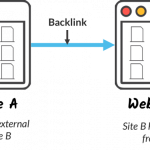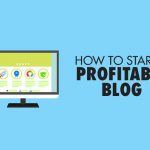In today’s digital landscape, SEO (Search Engine Optimization) plays a crucial role in driving organic traffic and attracting potential customers. However, simply implementing SEO tactics without a well-defined strategy can lead to wasted efforts and missed opportunities. To truly unlock the power of SEO, it is essential to understand and target your audience throughout the marketing funnel. In this article, we will explore effective techniques to align your SEO efforts with each stage of the funnel, ensuring that you deliver the right content to the right audience at the right time.
Understanding the Marketing Funnel:
Before diving into SEO audience targeting, let’s briefly recap the stages of the marketing funnel. The funnel consists of three main phases: the top of the funnel, the middle of the funnel, and the bottom of the funnel.
- Top of the Funnel:
At the top of the funnel, the primary goal is to create awareness among your target audience. This is the stage where potential customers become aware of your brand, product, or service. To effectively target this audience, focus on providing informative and educational content that addresses their needs rather than directly promoting your products. - Middle of the Funnel:
In the middle of the funnel, individuals have shown interest in your offerings and are actively seeking more information. They engage with your content, sign up for newsletters, and explore your product pages. At this stage, it is crucial to provide detailed information about your products or services, highlighting their benefits and how they address specific customer needs. - Bottom of the Funnel:
The final stage of the funnel is where users evaluate their options and make purchase decisions. They compare your offerings with those of competitors, read reviews, and seek reassurance. To target this audience effectively, focus on building trust and loyalty through content that highlights your brand’s value, encouraging them to convert and leave a positive impression.
Aligning SEO Efforts with the Funnel:
Now that we understand the marketing funnel, let’s explore how we can align our SEO strategy with each stage to maximize its effectiveness.
- Awareness Stage:
At the top of the funnel, users have informational search intent. They are searching for answers to their questions and seeking educational content. To target this audience effectively, consider the following tactics:
- Identify relevant keywords and phrases that your target audience might use when searching for information related to your industry, products, or services.
- Develop high-quality, informative content such as blog posts, infographics, videos, and social media content that addresses the key components, questions, and interests of your target audience.
- Target keywords that often trigger featured snippets in search results to gain more visibility and establish authority.
- Consideration Stage:
In the middle of the funnel, users have shifted their intent towards commercial and transactional. They are actively considering their options and seeking more specific information. To target this audience effectively, consider the following tactics:
- Target more specific and long-tail keywords that indicate user intent to learn more or make a decision.
- Develop comprehensive guides, product reviews, and comparison articles that provide valuable insights and help users make informed decisions.
- Utilize location-specific keywords to drive users to your physical location if applicable, utilizing local SEO strategies.
- Conversion Stage:
In the bottom of the funnel, users have navigational and transactional intent. They are ready to make a purchase decision and are actively searching for specific brands or products. To target this audience effectively, consider the following tactics:
- Optimize your product pages and service descriptions to target keywords that signal user intent to purchase.
- Use schema markup to provide rich product information in search results, making it easier for users to compare and decide.
- Pay attention to navigational and transactional keywords that include brand names, specific products, or action-related phrases like “buy,” “order,” or “contact.”
Tools for Tracking and Optimization:
To measure the effectiveness of your SEO efforts throughout the funnel, utilize the following tools:
- Google Analytics 4:
This tracking tool provides comprehensive insights into website traffic, user behavior, and conversions. Set up goals and funnels to measure specific events and track user engagement. - Google Search Console:
This tool offers valuable data insights to track search queries, page performance, and monitor how Google crawls and indexes your site. Utilize it to optimize your SEO strategy based on core KPIs such as clicks, impressions, and click-through rates. - Keyword Research Tools:
Tools like Semrush, Ahrefs, and Moz can help you discover and track keywords for SEO. These tools provide insights into keyword intent, search volume, and ranking difficulty, allowing you to optimize your content accordingly.
Conclusion:
To maximize the effectiveness of your SEO strategy, it is essential to align your efforts with the stages of the marketing funnel. By understanding user intent and delivering the right content to the right audience at the right time, you can drive organic traffic, engage potential customers, and increase conversions. Remember to continuously monitor and optimize your SEO strategy using tools like GoogleAnalytics, Google Search Console, and keyword research tools. By incorporating these techniques and tools into your SEO strategy, you can successfully target your audience throughout the marketing funnel and achieve your business goals. Start implementing these strategies today and watch your organic visibility and conversions soar.





























